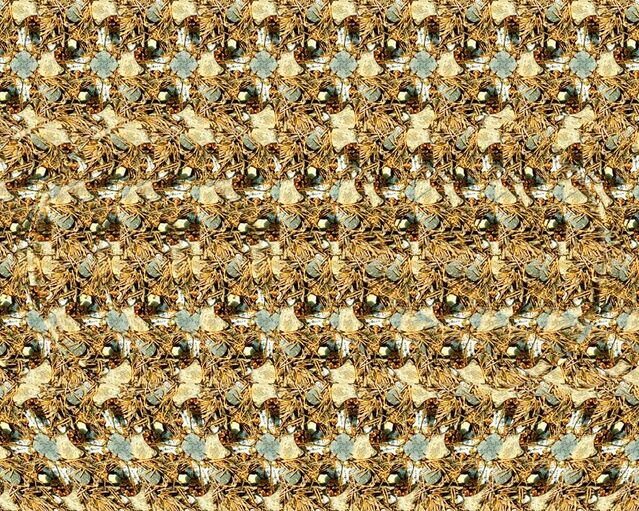Religion
Do You See the Hidden Image?
What a hidden 3D image teaches us about the search for God and other mysteries.
Posted December 7, 2020 Reviewed by Lybi Ma
There is a hidden 3D image in this picture. Do you see it?

If you can clearly identify the hidden image, congratulations: you are able to see something that most others cannot. However, if you are among the majority of people who can't see the hidden image, you have a choice: you can either believe that the image is there despite your inability to see it, or you can reject the notion that there is a hidden 3D image in the picture at all.
The religions of the world were founded by various prophets: visionaries who had an awareness of things that others did not. Among them are the rishis of ancient India; Abraham of Genesis, patriarch of Judaism, Christianity, and Islam; and Siddhārtha Gautama, the Buddha. These prophets succeeded in convincing those around them to believe in their respective visions - of the divine or of some hidden Truth - and have faith in their methods for developing a deeper awareness of this hidden reality.
You may believe that having blind faith in such prophets is misguided. After all, how could you know whether they were honest about what they saw? How could you trust that they weren't mentally ill or just trying to manipulate people?
When it comes to the divine, it is often said that "seeing is believing." But what if you cannot see: Is there a benefit to believing anyway?
What if someone told you she could train you to see the hidden image in the picture above, but it required some practice. Would you have enough faith to invest your time and efforts?
Only about two in 10 people that I know are able to see the hidden 3D image in the picture above. Among those who can't see it, some choose to believe that the hidden image is there, despite their inability to see it, while others believe that it's all a hoax.
Is it any different with God and the other mysteries of existence?
When we cannot see or understand something ourselves, we have no other option but to rely on our faith in others. If we feel that another person is trustworthy, we will likely find reasons to believe that person, regardless of whether s/he is telling us about the existence of God; the presence of a hidden 3D image; or the safety of a vaccine. This poses a dilemma and there is room to err on both sides of this dilemma.
As discussed in a previous post, it is not always the best approach to evaluate the validity of an argument based solely on the reputation of the person making that argument, regardless of whether that person's reputation is terrible or impeccable. When we do, this is called the ad hominem fallacy (or the argument from authority, when it is positive). Rather than simply having blind faith (or disbelief) in a single person, it is better to evaluate the validity of their claims yourself and come to your own conclusions. But what if you haven't had the training or the direct personal experience to evaluate a claim yourself?
Dilemmas of this sort led Blaise Pascal, the 17th-century French mathematician, to offer his famous wager to help people make rational, day-to-day, decisions in the absence of knowing for sure whether God actually exists.
As we begin the holiday season, a time that is traditionally dedicated to the celebration of miracles and mystery within several world religions, I leave you with this question: Do you believe in anything you cannot see?
If you would like to know what the hidden 3D image is in the picture above, you can email me at MindCube3D@gmail.com and I will tell you. But will you believe me if you cannot see it for yourself?


